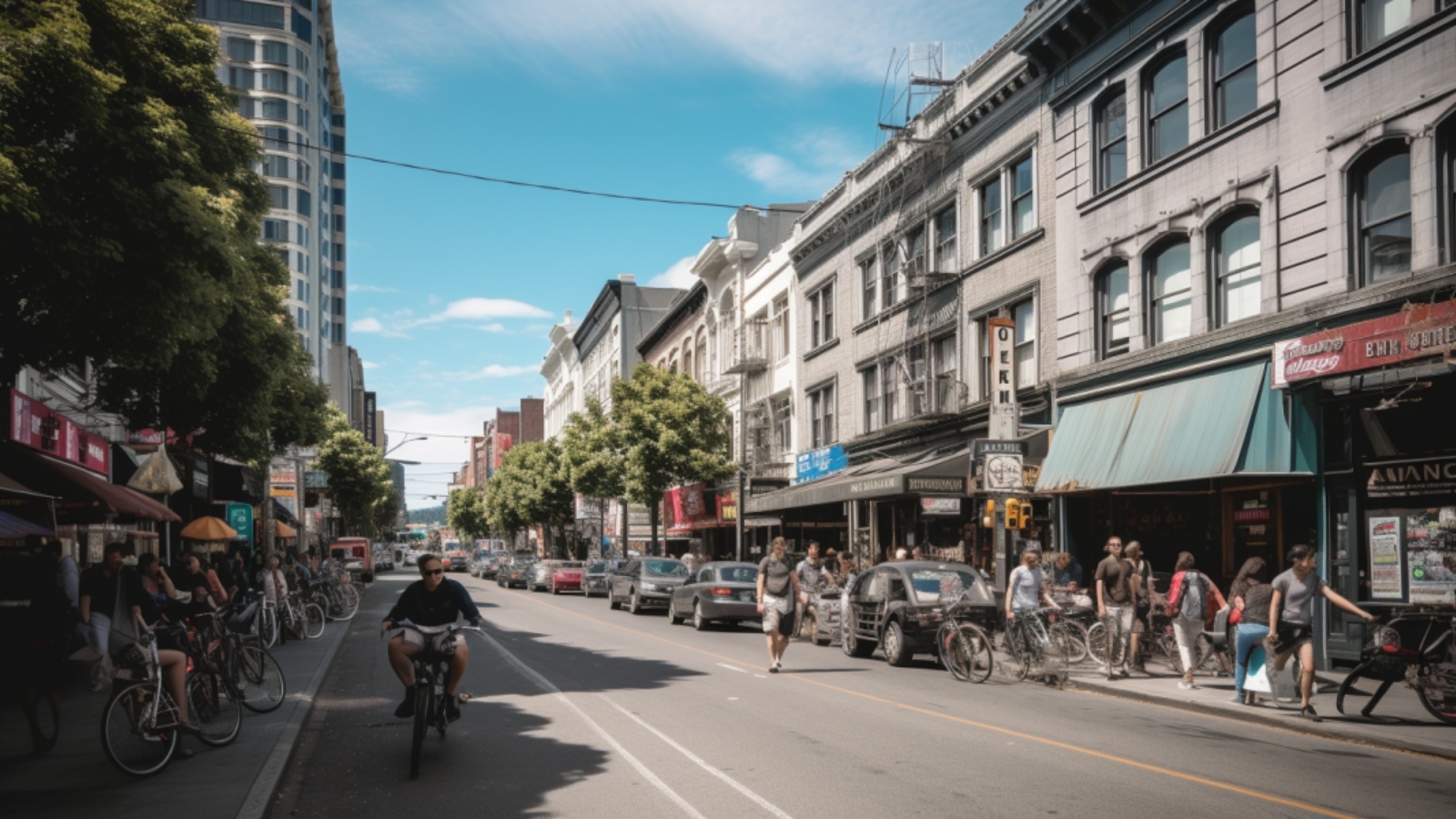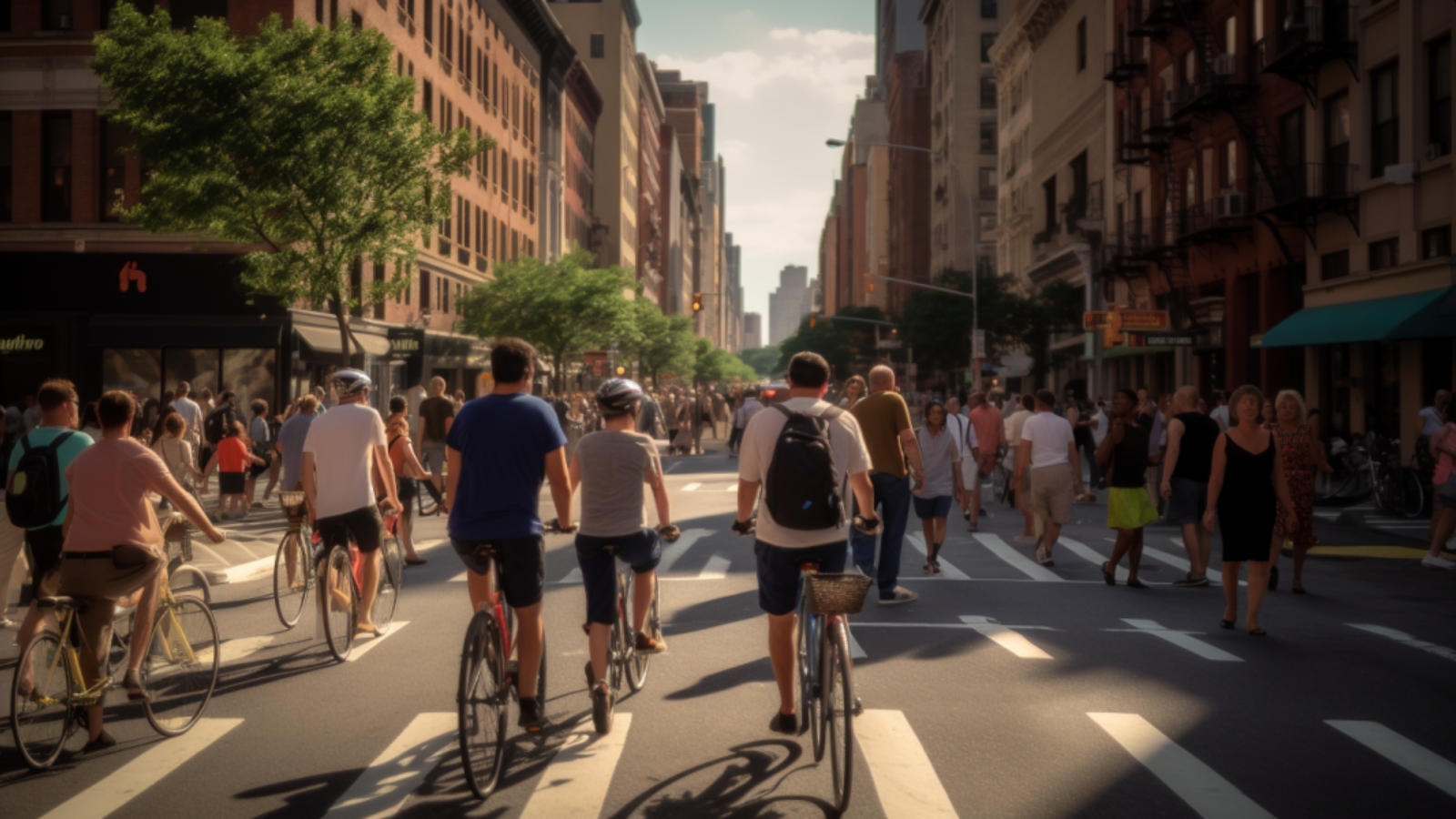The 15-minute city phenomenon – a vision for sustainable urban life or a threat to personal freedom? Explore the controversies and promises of this transformative concept in our in-depth analysis.
So, what on earth is a 15-minute city? In a nutshell, it’s a vision where your entire life is comfortably within arm’s reach, or shall we say, within a brisk walk or an easy pedal. From your daily grind to your retail therapy, education, healthcare, and recreation, it’s all just a stone’s throw away. Think of it as a throwback to simpler times when walking was how you got around town.
This audacious idea has won the hearts of esteemed academics and city planners alike, all rallying behind the return of our humble feet as the preferred mode of transit.
But it’s not just about convenience; it’s a grand vision to enhance the lives of city dwellers, bolster local economies, reduce traffic chaos, and, crucially, cut down on our carbon footprint. In essence, it’s our ticket to a cleaner and more sustainable urban existence, while simultaneously aiding our fight against the climate crisis.
Less Car, More Planet
One of the most significant perks of embracing the 15-minute city concept is the reduction in our reliance on cars. Now, we all know the traditional environmental culprits of cars: emissions, fuel consumption, and traffic accidents.
Now, while the 15-minute city is all about being car-free, we’ve got to be practical. There are times when a car is the only option. That’s where the electric vehicle (EV) comes in. Going electric means less pollution, better air quality, and less noise disruption compared to your run-of-the-mill petrol or diesel vehicle. Electric vehicles are exceptionally well-suited for short trips and city commuting. They produce zero tailpipe emissions, contributing to improved air quality, a critical factor for the health and well-being of urban residents.
A Breath of Fresh Air
Air pollution in the UK is a real health hazard. Smog and pollutants have dire consequences, leading to respiratory issues, asthma, and circulation problems, especially in the most polluted urban centres. It’s estimated that human-made air pollution causes 28,000 to 36,000 deaths annually.
Imagine charging your EV at home using renewable energy or your own solar panels. It’s a game-changer. You’re not just reducing your carbon footprint; you’re practically eliminating it. Fewer cars on the road and a switch to EVs can usher in an era of cleaner air, and who doesn’t want that?

Cooling the Urban Jungle
For those who’ve ventured from the countryside into the heart of the city, you’ll know the story: a sudden surge in temperature. This is the dreaded urban heat island effect, a result of human activity. It’s caused by the lack of greenery in urban areas, where buildings and the ground store excess heat, creating a mini-climate of their own.
One solution? Plant more trees. They cool down the streets, making city life a tad more bearable. But within the 15-minute city, we take it up a notch. By repurposing underused urban spaces into lush green oases, we can battle the urban heat island effect head-on. Cooler cities mean a more pleasant living environment and a buffer against climate change.
Paris Takes the Plunge
Across the English Channel in the city of love, Mayor Anne Hidalgo made a bold promise during her re-election campaign: Paris will embrace the 15-minute city vision. To craft self-sufficient, stress-free communities while reducing pollution. A noble pursuit, indeed.
The British Isles Embrace the Change
But what about good old Blighty? Is the UK getting on board? Absolutely. From Bristol to Birmingham, Canterbury to Ipswich, and Sheffield to the dreaming spires of Oxford, several local authorities are keen to dive into the 15-minute city experiment. Oxford, in particular, has set its sights on becoming a full-fledged 15-minute city by 2040, leading the charge in this transformative journey.
Future-Proofing Our Cities
As we hurtle towards a future dominated by megacities, with 68% of the global population residing in cities by 2050, the time to act is now. Our cities must evolve, not just to accommodate rapid urbanisation, but also to cut energy consumption and carbon emissions.
And let’s not forget the role of solar energy. Solar power isn’t just an environmental superstar; it’s a financial one too. From rooftop solar panels to solar-integrated building facades, solar energy is primed to be a driving force in cutting costs and steering us toward a renewable future.
Navigating the 15-Minute Maze
While these councils are all gung-ho about adopting the 15-minute city model, turning their vision into reality is no stroll in the park. Transformations often come bundled with car restrictions and the introduction of Ultra Low Emission Zones, making some motorists nervous.

During the quieter days of lockdown, several councils saw a golden opportunity to roll out cycle lanes, pedestrianize streets, and reroute traffic using nifty bollards.
However, not everyone’s on board. February 19 saw Oxford erupt in protests against the planned introduction of Low Traffic Neighbourhoods, a key pillar of the local government’s broader 15-minute city plan. Critics argue these measures infringe on residents’ rights, threaten drivers’ freedom, and hurt local businesses.
Unearthing the Controversy
Beyond the surface-level disagreements over local policies, there’s a darker undercurrent of suspicion. Some view the 15-minute city as having a shadowy agenda.
They are criticized like Ultra Low Emission Zones, with claims that they deal severe economic blows to cities and could encroach on personal freedoms, a sentiment shared by many.
A Path Filled with Promise and Peril
In the grand scheme of urban living, the 15-minute city concept has sparked fierce debates and political showdowns. While many herald it as a beacon of sustainability, others raise valid concerns about personal freedoms and economic consequences.
The 15-minute city isn’t just an idea; it’s a bold reimagining of urban existence. It’s a promise of cleaner air, less reliance on cars, more green spaces, cooler city temperatures, and a sustainable future for our burgeoning metropolises, leading us towards a greener and more sustainable tomorrow.
